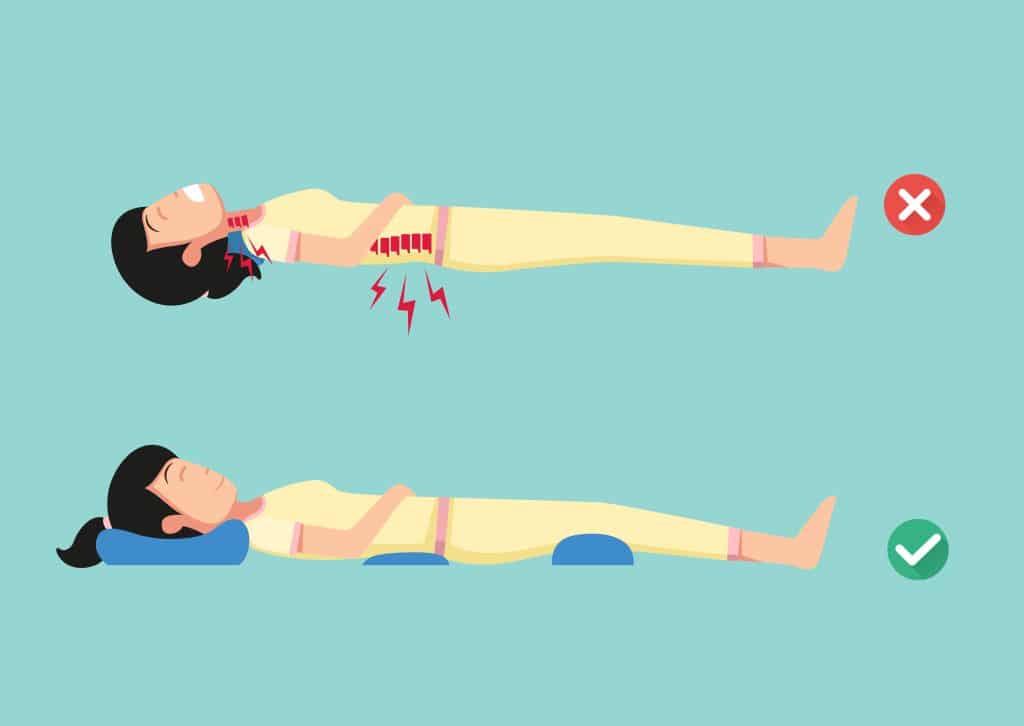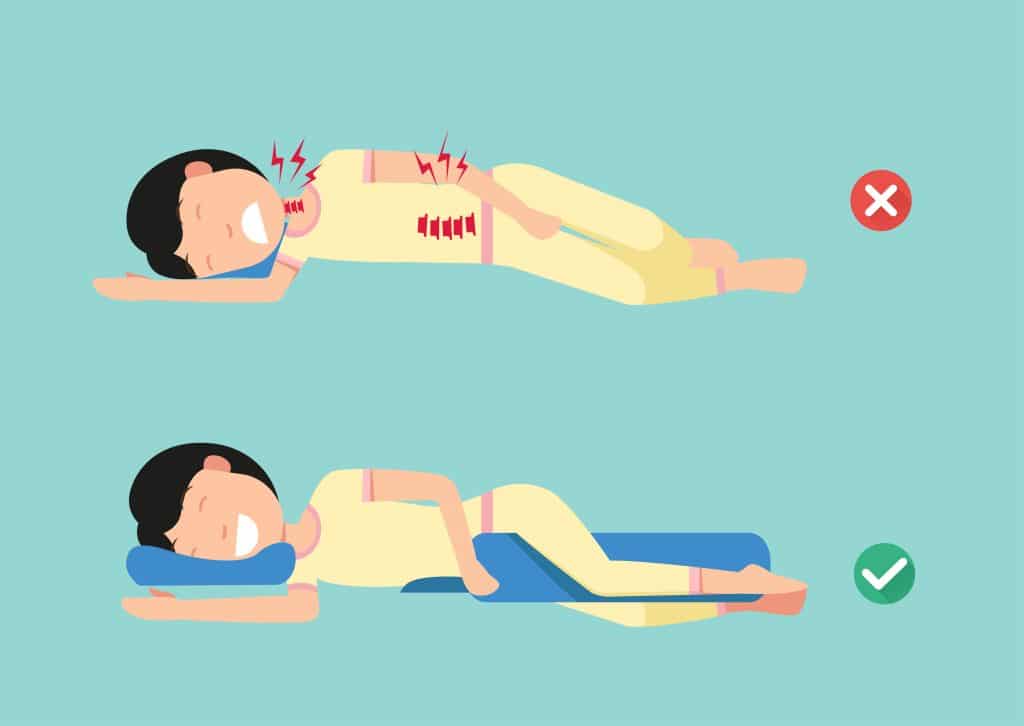Sleep is one of the most important processes your body goes through. It’s when your entire body enters into a state of healing. It starts repairing and replenishing itself to be healthy and functioning at its very best. You might not think about your spine as you’re drifting away to dreamland, but your sleep posture can often lead you to wake up with aches and pains the following day. So it’s time to ask yourself: is your sleep position causing pain? Here are 4 things you can do while sleeping to help prevent back pain.

Keep Your Spine In A Neutral Position.
Regardless of what position you sleep in, keeping proper alignment of your spine is the most important part of sleeping. You’ll want to focus specifically on keeping your ears, shoulders, and hips aligned. If you notice gaps between your body and the bed, you can change your position or grab extra pillows. Using additional pillows will provide support and avoid straining your muscles and spine.
Be extra careful when switching positions, as you can easily get out of alignment from turning and twisting motions. Keep your core pulled in a tight and always move your entire body together as you turn. You can even bring your knees up to your chest to make rolling easier.

Sleep On Your Back.
One of the best positions you can sleep in is on your back. Your weight is evenly distributed across the widest surface of your body in this position. This helps ensure proper alignment and minimizes pressure points.
Those who experience back pain often find relief when sleeping on their back. It’s important to keep a pillow under your knees to maintain the curvature and reduce low back strain. You may also place a small, rolled-up towel under your back for additional support.

Use The Right Pillows.
Another big reason people experience back pain from sleeping is that they’re using inadequate pillows. Ideally, you should be using two different pillows under your head when you sleep. A thinner pillow for sleeping on your back and a thicker pillow for side-sleeping. These pillows help you maintain a neutral position by filling the space between your neck and the mattress. You can also use a combination pillow that is thinner in the middle and thicker on the sides to accommodate different sleeping positions.
If lying on your back is uncomfortable, try shifting to your side, with your shoulder and your entire side making contact with the mattress. This act alone won’t rid your pain but using a pillow between your knees will. The pillow will support your pelvis, hips, and spine in better alignment and prevent you from waking up with aches and pains.
Evaluate Your Mattress.
Your mattress is an essential part of your everyday life. You can expect a good 7-10 years out of a premium mattress, but eventually, it will succumb to the wear and tear of supporting your body every night. Springs break down over time, memory foam gets softer, and the fibers in other materials compress—all of which lead to sagging. Don’t wait for a crater to form in the middle of your bed. Even minor sags shouldn’t be ignored, as they can mean a lack of support for your body.
Old mattresses tend to gradually lose their ability to provide proper support, creating uncomfortable pressure points due to sleeping directly on the springs. Because of the gradual deterioration and softening, it loses its ability to provide crucial support for vulnerable areas like your neck, low back, and hips. If you’re frequently wake up during the night to adjust positions or aren’t sleeping through the night altogether, chances are your mattress no longer provides the proper comfort you need. The same may very well be true if you seem to sleep through the night but still wake up tired.
While you can’t be completely responsible for what your body does while it’s dreaming, you can take measures to sleep in more ideal positions.



